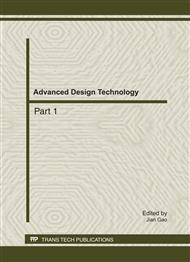p.2319
p.2328
p.2334
p.2340
p.2345
p.2349
p.2353
p.2358
p.2364
GPU Based Boundary Element Analysis for 3D Elastostatics with GMRES-DC Algorithm Solving System Equations
Abstract:
During the modern product design, CAD softwares are widely used for geometric modeling and finite element method is used for structural performance analysis. Plenty of designers’ working time is spending in the pre-processing work of finite element analysis. Boundary Element Method(BEM) has been studied in recent years to analyze 3D elastostatics instead of Finite Element Method(FEM) because of the decrease of unknowns and easier mesh generation process. But the calculation amount of BEM is large, especially for the coefficient integrals and system equations solution. In this paper, we present a Boundary Element parallel computation technique for 3D elastostatics using Computing Unified Device Architecture (CUDA) that runs on GPU. Furthermore, we propose GMRES-DC (GMRES with Dual Compensation) algorithm based on the classic GMRES algorithm to gain a higher solving efficiency. The examples show that the GPU parallel implementation in this paper can accelerate BEM computation greatly, and the GMRES-DC algorithm can solve the BEM system equations efficiently.
Info:
Periodical:
Pages:
2345-2348
Citation:
Online since:
August 2011
Authors:
Price:
Сopyright:
© 2011 Trans Tech Publications Ltd. All Rights Reserved
Share:
Citation:


